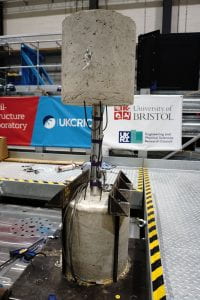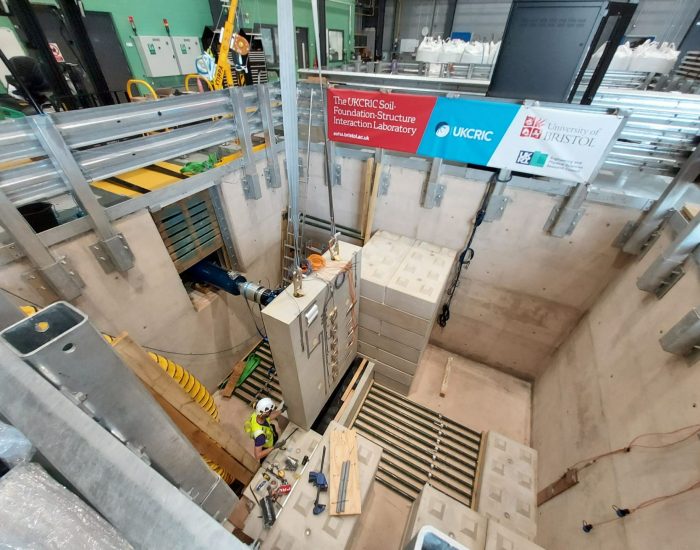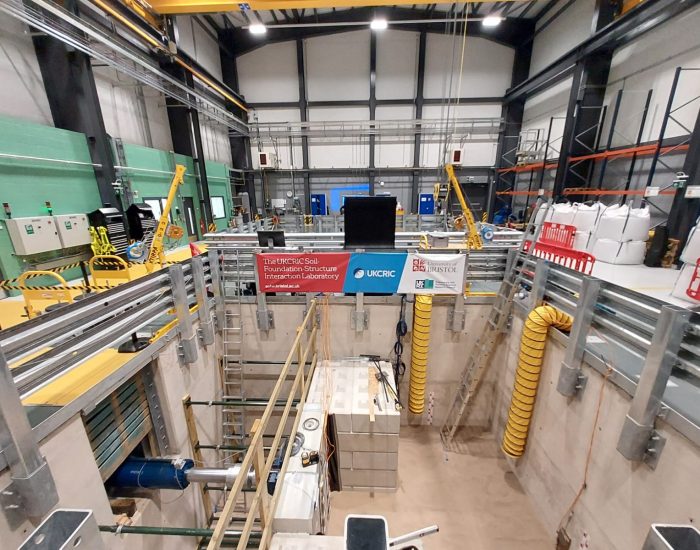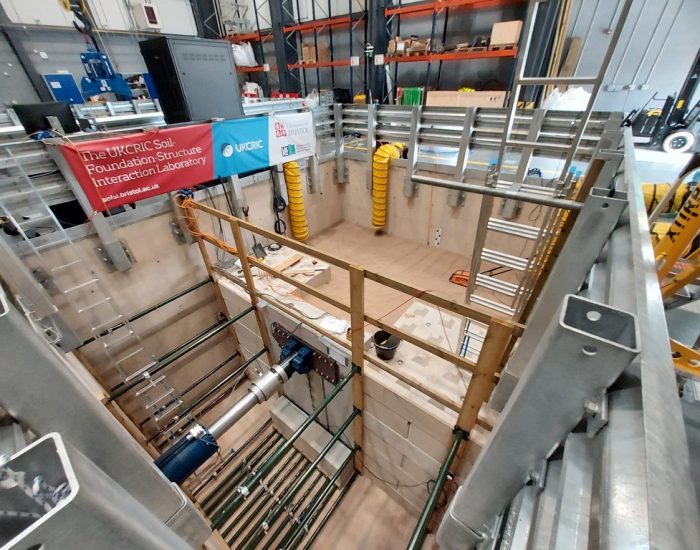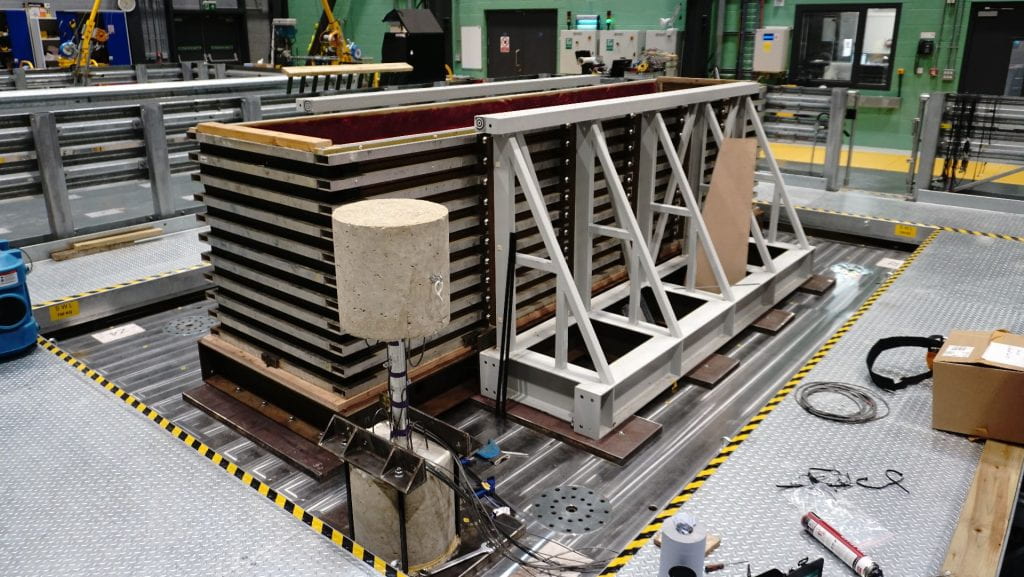
We’re almost ready to start testing on our large shaking table, for the first of four projects being undertaken in SoFSI as part of the wider European-funded ERIES project. This project, in partnership with a multi-national user group, aims to investigate the effect of river scour on the seismic performance of bridge foundations.
The first stage of testing is a fixed-base test of the specimen mounted directly on the shaking table. This will help to characterise the model so we understand it’s resonant frequencies.
We will then mount the model in sand in our shear stack (laminar soil box) for the main set of tests in April. For these we’ll subject the model to white noise and seismic motions, before excavating increasing depths of sand from around the foundation to simulate scour of the sediment.
